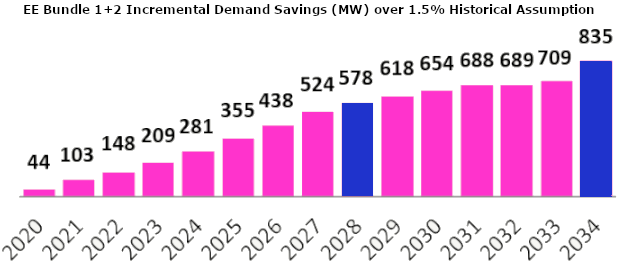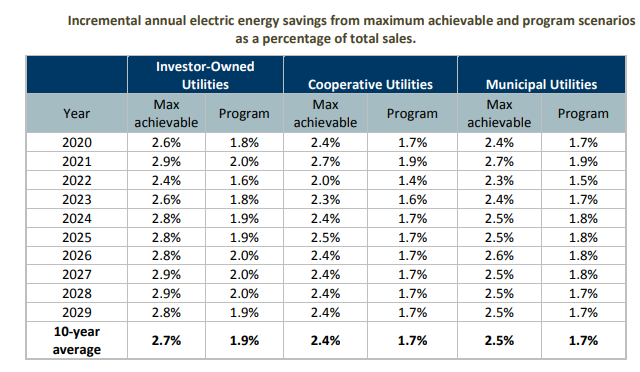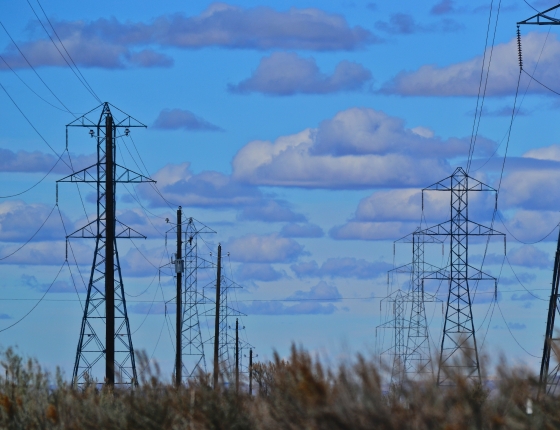This content originated as a Twitter thread. Follow Mike Bull at @Mike_MnCEE.
As part of our policy advocacy on energy efficiency, CEE has long focused on helping decision-makers understand energy efficiency as a critically valuable utility resource — a low-cost way to meet a utility’s resource needs, reduce customer energy bills, and reduce system carbon emissions.
A key development this spring represents a revolutionary leap forward in that effort.
On May 20, we announced a historic clean energy agreement between Xcel Energy, Fresh Energy, Clean Grid Alliance, LIUNA Minnesota & North Dakota, Minnesota Center for Environmental Advocacy, Sierra Club, the Union of Concerned Scientists, and CEE.
Xcel Energy’s commitment to retire all of its coal in the Upper Midwest by 2030 and install record amounts of solar power captured most of the headlines — rightfully so! But equally important are the utility’s commitments on energy efficiency… and because efficiency is the silent hero of the clean energy transition, we think it’s important to highlight those for you.
In the agreement, Xcel Energy committed to a preferred resource plan for energy efficiency levels amounting to 706 gigawatt-hours of energy savings per year (when annualized) at minimum. Compare this amount of energy efficiency to the fact that Xcel Energy achieved their highest single-year record for efficiency in 2018, amounting to 680 gigawatt-hours or roughly 2.35% of sales that year.
In other words, Xcel Energy has committed to planning to exceed their 2018 record each year for at least the next decade.
In addition, this level of energy efficiency would provide about 575 megawatts of capacity by 2028, more capacity than the 511 megawatt Allen S. King coal plant that Xcel Energy has agreed to retire in 2028 under the plan. The energy efficiency resource would contribute 835 megawatts of capacity by 2034, just a bit short of the 876 megawatts of the Sherco 3 coal unit that Xcel will retire in 2030.

Note that these are annual cumulative amounts — i.e., the 578 megawatts in 2028 are included within the 835 megawatts total in 2034.
Minnesota efficiency advocates know that utilities have long resisted aiming higher than the state's energy efficiency target of at least 1.5% of retail utility sales. In fact, utilities generally start with a low-ball target in an attempt to eventually land right around 1.5%.
But instead of running that tired old play this time, Xcel Energy set a new bar for all Minnesota electric utilities. They agreed to model bundles of energy efficiency as a resource that their resource planning model can select to meet forecasted customer energy needs, just as they do with supply-side resources like wind, solar, or natural gas. As a result, Xcel Energy's resource planning model selected a lot more energy efficiency as part of a least-cost resource plan than under the old method — approaching twice as much in some years.
The plan’s energy efficiency bundles were built from data that CEE helped to collect as part of the statewide Energy Efficiency Potential Study published by the Minnesota Department of Commerce in December 2018.
Although other U.S. utilities have tried this modeling approach, we're not aware of any that have incorporated it as thoroughly as it seems Xcel Energy has. Building this level of efficiency into Xcel Energy’s preferred plan means the utility is planning new supply-side resources around this demand-side resource — displacing energy generation investments that aren’t needed and that their customers won’t have to pay for.
Of course, aiming for a bullseye isn’t the same as hitting it. And hitting this particular target — acquiring this energy resource — will require Xcel Energy customers to take action, assisted by their utility. At CEE, we know firsthand that moving customers to take action to save energy is hard but rewarding work, with its own needs and challenges. We're definitely not discounting that difficulty.
Despite the challenges, however, the 2018 Energy Efficiency Potential Study determined that the potential for cost-effective energy efficiency exists all over our state. Xcel Energy is to be applauded for having taken that study seriously in making this historic energy efficiency commitment in its resource plan.

For energy efficiency advocates like CEE, this is a really big deal that truly raises the bar for other Minnesota utilities such as Minnesota Power, Otter Tail Power Company, and Great River Energy, as each does its own resource planning in the next couple years.
CEE and our energy efficiency allies will all need to do the work necessary for Xcel Energy to collect that efficiency resource from their customers. Luckily we’re more than up for the challenge, and ready to keep moving forward — it’s one of the biggest reasons we're so excited to be part of this milestone agreement.
